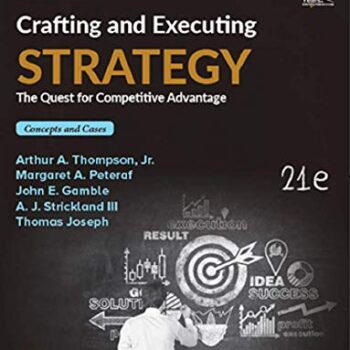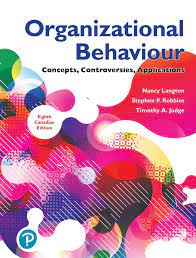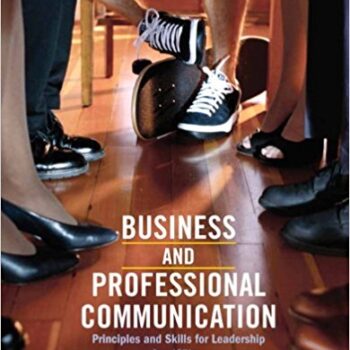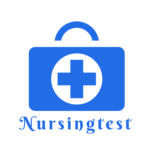
Test Bank for The Skilled Helper A Problem-Management And OpportunityDevelopment Approach to Helping 11th Edition By Gerard Egan
Original price was: $65.00.$30.00Current price is: $30.00.
Digital item No Waiting Time Instant DownloadISBN-13: 978-1305865716 ISBN-10: 1305865715
The Test Bank for The Skilled Helper|Preparation Materials of Egan’s 11th Edition Users is the Test Bank which assists learners and practitioners in counseling with an emphasis on problem solving and helping the clients to take advantage of the available opportunities. This is in conjunction with the 11th Edition by Gerard Egan which is one of the problem-management approaches in wider use in the field of counseling psychology. It includes important stages of the helping relationships and therefore cultivates the helper skills to apply them to the improvement of other people`s lives, career selection, and even helping in overcoming difficulties.
How This Test Bank Enhances Learning
Applying the Test Bank for The Skilled Helper is another step towards mastering the basic concepts of assisting that works best with the clients. This test bank helps reinforce such concepts as client self-determination, ethics, and goal attainment. Such practice questions let students feel more assured in helping their clients as they expect positive outcomes to prevail using the Jodenov-bars block strategy.
The test bank focuses on:
- Interactive Problem Solving Activities: The questions are framed according to the counselling framework providing real-life experience in tackling the questions.
- Skill Development: Includes the treatment intervention starting from the helping process, exploration, comprehension, and the final action.
- Feedback and Evaluation: This offers an opportunity to assess the knowledge acquired and one’s stance in the counseling situations, thereby, providing a means of skill development through practicing the guided techniques.
Key Areas Covered
Gerard Egan under the Skilled Helper Model outlines 3 components in the helpful process. The test bank offers questions on each stage to strengthen understanding:
- Current Scenario Understanding: Clients outline difficulties and prospects. Test questions focus on assessing the counselor’s construct in line with that of the client.
- Preferred Outcome Development: Clients look towards heading goals and approaches to the achievement of the goals. The questions in this section help users build goal-setting skills.
- Action Strategies: Clients begin the action plans. The test bank provides scenarios to practice strategy building in real-life problem-solving situations.
- Benefits of Using the Test Bank The Test Bank for The Skilled Helper is a resource to offers practical application in the context of college and clinical supervision.
- Practical Application: It enhances active learning via real-life counseling examples to foster how to empower clients.
- Confidence Building: Practice builds confidence in handling multiple counseling situations.
- Deep Understanding: Examining questions focused on each nail of the helping process guarantees a proper understanding of the material.
Summary
The Study Guide and Test Bank for The Skilled Helper, 11th Edition by Gerard Egan, is an indispensable resource for every individual aiming to better their counseling skills. This assists in reinforcing the concepts of problem-solving and opportunity development and provides students and practitioners the chance to practice various techniques that are necessary to form effective helping relationships.
Test Bank for The Skilled Helper A Problem-Management And OpportunityDevelopment Approach to Helping 11th Edition By Gerard Egan
|
1. The term “working alliance” refers to which of the following? a. The national association of counselors, social workers, and psychologists b. The relationship between the client and the mental health establishment c. The collaboration between client and helper based on their agreement to counseling goals and tasks d. The rules of counseling that define the schedule and any fees associated with the helping experience ANSWER: c POINTS: 1 DIFFICULTY: Medium REFERENCES: Understand What Makes Helping Relationships Work QUESTION TYPE: Multiple Choice HAS VARIABLES: False LEARNING OBJECTIVES: EGAN.SKIL.19.03.01 – Understand What Makes Helping Relationships Work NATIONAL STANDARDS: United States – CSHSE 3.13c – The major models used to conceptualize and integrate prevention, maintenance, intervention, rehabilitation, and healthy functioningUnited States – CSHSE 6.16c – Knowledge and skill development in the following areas: 1. Case management, 2. Intake interviewing, 3. Individual counseling, 4. Group facilitation and counseling, 5. Location and use of appropriate resources and referrals, and 6. Use of consultationUnited States – CSHSE 7.17d – Developing and sustaining behaviors that are congruent with the values and ethics of the profession united States – EPAS 6a – Apply knowledge of human behavior and the social environment, person-in-environment, and other multidisciplinary theoretical frameworks to engage with clients and constituencies DATE CREATED: 2/22/2018 5:27 AM DATE MODIFIED: 2/28/2018 2:09 AM |
|
2. Which of the following is most accurate regarding the collaborative nature of the relationship between the helper and the client? a. The helper’s primary goal is to cure the client. b. Both the helper and the client have work to do in the problem-management and opportunity-development stages and tasks, and both have responsibilities related to outcomes. c. The helper must follow the stages and tasks of the helping process so that the client can be guided toward a successful outcome. d. The client needs to be as expressive and clear about problems as possible. ANSWER: b POINTS: 1 DIFFICULTY: Medium REFERENCES: Understand What Makes Helping Relationships Work QUESTION TYPE: Multiple Choice HAS VARIABLES: False LEARNING OBJECTIVES: EGAN.SKIL.19.03.01 – Understand What Makes Helping Relationships Work NATIONAL STANDARDS: United States – CACREP 5a – Theories and models of counselingUnited States – CSHSE 3.13c – The major models used to conceptualize and integrate prevention, maintenance, intervention, rehabilitation, and healthy functioningUnited States – CSHSE 6.16c – Knowledge and skill development in the following areas: 1. Case management, 2. Intake interviewing, 3. Individual counseling, 4. Group facilitation and counseling, 5. Location and use of appropriate resources and referrals, and 6. Use of consultationUnited States – CSHSE 7.17d – Developing and sustaining behaviors that are congruent with the values and ethics of the profession united States – EPAS 7c – Develop mutually agreed-on intervention goals and objectives based on the critical assessment of strengths, needs, and challenges within clients and constituencies DATE CREATED: 2/22/2018 5:27 AM DATE MODIFIED: 2/28/2018 2:09 AM |
|
3. Outcome research indicates that within the helping relationship, ____. a. the helping experience should be organized around the client’s resources, perceptions, experiences, and ideas b. the helper should regularly make every effort to help the client to see the truth of what is bothering the client c. helping is most successful when the helper helps the client to face difficult or painful feelings d. helping immediately exposes how social and cultural pressures have caused serious difficulties for the client ANSWER: a POINTS: 1 DIFFICULTY: Medium REFERENCES: Understand What Makes Helping Relationships Work QUESTION TYPE: Multiple Choice HAS VARIABLES: False LEARNING OBJECTIVES: EGAN.SKIL.19.03.01 – Understand What Makes Helping Relationships Work NATIONAL STANDARDS: United States – CACREP 5j – Evidence-based counseling strategies and techniques for prevention and interventionUnited States – CSHSE 9.19b – Client self-determination united States – EPAS 7d – Select appropriate intervention strategies based on the assessment, research knowledge, and values and preferences of clients and constituencies DATE CREATED: 2/22/2018 5:27 AM DATE MODIFIED: 2/28/2018 2:09 AM |
|
4. Counseling research has found that clients typically begin improving ____. a. early in the treatment b. in the middle of the treatment c. later on in the treatment d. after finishing the treatment ANSWER: a POINTS: 1 DIFFICULTY: Medium REFERENCES: Understand What Makes Helping Relationships Work QUESTION TYPE: Multiple Choice HAS VARIABLES: False LEARNING OBJECTIVES: EGAN.SKIL.19.03.01 – Understand What Makes Helping Relationships Work NATIONAL STANDARDS: United States – CACREP 5a – Theories and models of counselingUnited States – CSHSE 6.16c – Knowledge and skill development in the following areas: 1. Case management, 2. Intake interviewing, 3. Individual counseling, 4. Group facilitation and counseling, 5. Location and use of appropriate resources and referrals, and 6. Use of consultationUnited States – EPAS 8b – Apply knowledge of human behavior and the social environment, person-in-environment, and other multidisciplinary theoretical frameworks in interventions with clients and constituencies DATE CREATED: 2/22/2018 5:27 AM DATE MODIFIED: 2/28/2018 2:09 AM |
|
5. According to Egan, culture can be understood as which of the following? a. An individual’s racial or ethnic background and composition b. The kinds of music, visual arts, architecture, and literature in which an individual demonstrates the most interest and involvement c. Shared beliefs and assumptions interacting with shared values to produce shared norms driving shared behavior patterns d. How people interact in a society ANSWER: c POINTS: 1 DIFFICULTY: Medium REFERENCES: Develop a Proactive Appreciation of Diversity as a Sense-of-the World Value QUESTION TYPE: Multiple Choice HAS VARIABLES: False LEARNING OBJECTIVES: EGAN.SKIL.19.03.05 – Develop a Proactive Appreciation of Diversity as a Sense-of-the-World Value NATIONAL STANDARDS: United States – CACREP 2a – Multicultural and pluralistic characteristics within and among diverse groups nationally and internationallyUnited States – CSHSE 10.20c – Awareness of diversity united States – CSHSE 2.12f – Emphasis on context and the role of diversity (including, but not limited to ethnicity, culture, gender, sexual orientation, learning styles, ability, and socioeconomic status) in determining and meeting human needsUnited States – EPAS 2a – Apply and communicate understanding of the importance of diversity and difference in shaping life experiences in practice at the micro, mezzo, and macro levels DATE CREATED: 2/22/2018 5:27 AM DATE MODIFIED: 2/28/2018 10:24 AM |






